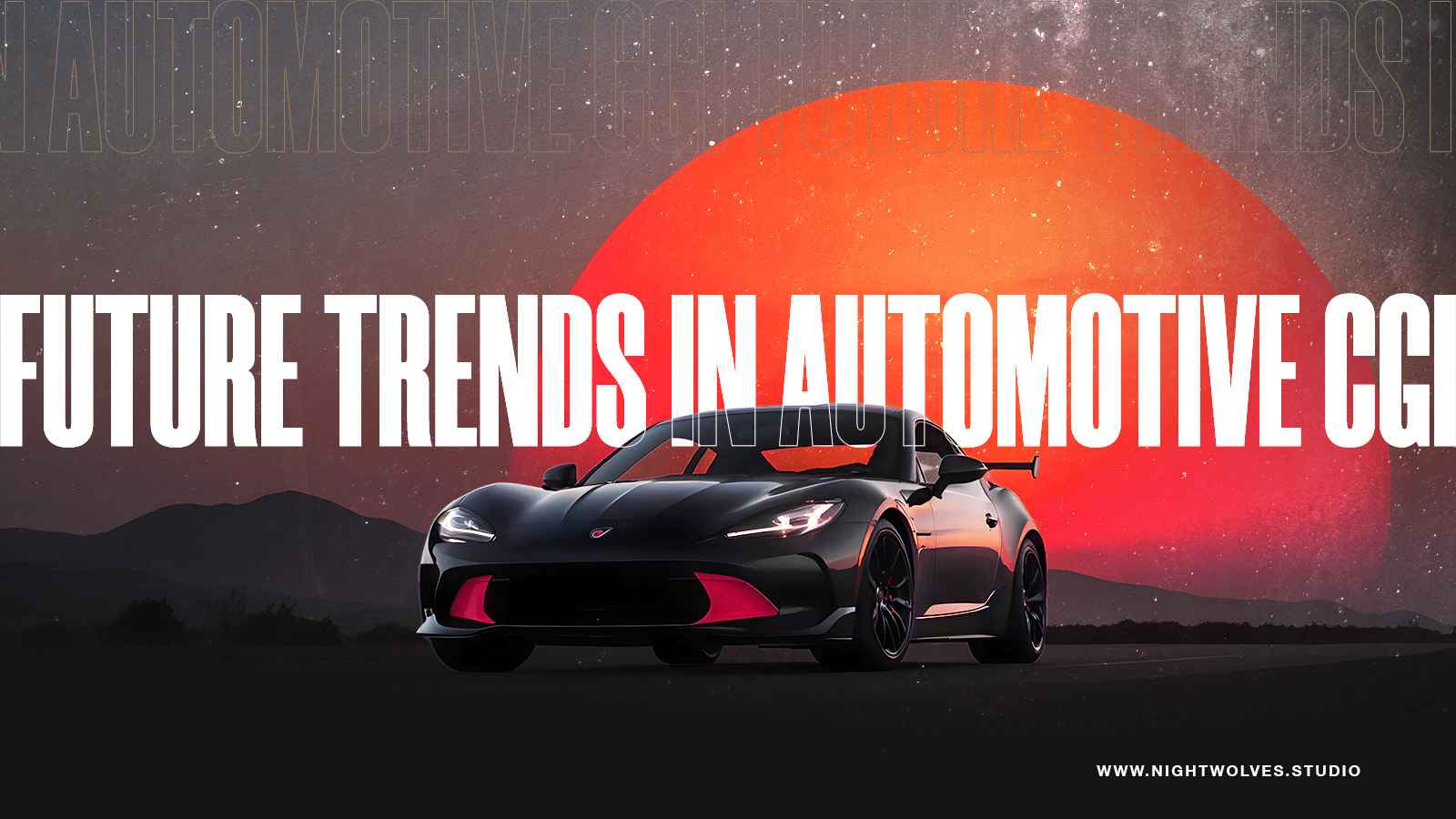The automotive industry is on the cusp of a digital revolution, with Computer-Generated Imagery (CGI) playing a pivotal role in shaping the future of vehicle design, marketing, and customer experiences. As we look ahead, several key trends are emerging that will transform how we interact with and perceive automobiles. This blog post explores the exciting future of automotive CGI and its far-reaching implications for the industry.
Future of Automotive CGI and its Implications
1. Hyper-Realistic Visualization
Advancements in CGI technology are pushing the boundaries of realism, making it increasingly difficult to distinguish between computer-generated images and photographs. Future trends in automotive CGI will see even more photorealistic renderings, allowing designers and marketers to showcase vehicles in stunning detail before they’re even manufactured.
Key developments:
- Advanced material rendering for ultra-realistic paint, metal, and glass textures
- Improved lighting simulation to accurately represent vehicles in various environments
- Integration of real-world physics for more authentic vehicle dynamics in CGI animations
2. Real-Time Rendering and Interactive Experiences
The rise of real-time rendering engines like Unreal Engine is revolutionizing how automotive companies create and present their vehicles. This technology enables:
- Interactive vehicle configurators that allow customers to customize and visualize cars in real-time
- Virtual showrooms where potential buyers can explore vehicles from the comfort of their homes
- Live CGI integration in automotive events and presentations
3. Virtual and Augmented Reality Integration
VR and AR technologies are set to transform the automotive CGI landscape, offering immersive experiences for both designers and consumers.
Applications include:
- VR design reviews allowing teams to collaborate on vehicle designs in a virtual space
- AR showroom experiences that enable customers to visualize cars in their own environments
- Virtual test drives of concept cars or upcoming models
4. AI-Powered CGI Creation
Artificial Intelligence is poised to revolutionize the CGI creation process in the automotive industry:
- Automated generation of multiple design variations based on set parameters
- AI-assisted optimization of CGI rendering for faster production times
- Predictive modeling of how CGI designs will perform in real-world conditions
5. Digital Twin Technology
The concept of digital twins will become increasingly important in automotive CGI:
- Creation of virtual replicas of physical vehicles for testing and simulation
- Real-time data integration to update digital models based on real-world performance
- Enhanced predictive maintenance capabilities through CGI visualization of vehicle wear and tear
6. Advanced Visualization for Autonomous Vehicles
As autonomous vehicles become more prevalent, CGI will play a crucial role in visualizing and simulating their operation:
- Detailed CGI representations of sensor data and decision-making processes
- Simulation of various traffic scenarios for testing and improving autonomous systems
- Visual communication of autonomous vehicle capabilities to consumers
7. Sustainable Design Visualization
CGI will be instrumental in showcasing and promoting sustainable automotive design:
- Visualization of aerodynamic properties for improved fuel efficiency
- Representation of eco-friendly materials and manufacturing processes
- CGI-powered lifecycle analysis visualizations for vehicles
Implications for the Automotive Industry
The future trends in automotive CGI will have profound implications for the industry:
- Accelerated Design Process: CGI will enable faster iterations and more efficient design workflows, reducing time-to-market for new vehicles.
- Enhanced Marketing Capabilities: Photorealistic CGI will allow for more compelling and versatile marketing campaigns, potentially reducing the need for physical prototypes.
- Improved Customer Engagement: Interactive and immersive CGI experiences will provide customers with more information and engagement opportunities before purchase.
- Cost Reduction: While initial investments in CGI technology may be significant, long-term savings in prototyping, marketing, and design processes are expected.
- Sustainability Promotion: CGI will play a crucial role in visualizing and promoting sustainable automotive technologies and designs.
- Democratization of Design: Advanced CGI tools may allow for greater consumer involvement in the design process, potentially leading to more personalized vehicles.
Conclusion
The future of automotive CGI is bright and full of potential. As these technologies continue to evolve, we can expect to see even more innovative applications that will reshape how vehicles are designed, marketed, and experienced. From hyper-realistic visualizations to AI-powered design processes, CGI is set to drive the automotive industry into a new era of creativity, efficiency, and customer engagement.
For automotive companies, staying ahead of these CGI trends will be crucial for maintaining a competitive edge in an increasingly digital marketplace. As we move forward, the lines between the physical and digital automotive worlds will continue to blur, creating exciting opportunities for innovation and growth in the industry.
Explore CGI
- Impact of CGI on Modern Automotive Ad Campaigns
- Learn How CGI Transforms Automobile Design and Prototyping
- Role of CGI in Future Car Design
- CGI In Car Commercials
- Best CGI Company in Mumbai
People Also Ask
Q: What is the future of CGI in the automotive industry?
Ans: The future of CGI in automotive lies in real-time rendering, AI-assisted design, and immersive virtual experiences. Brands are increasingly using CGI for digital twins, virtual showrooms, and interactive product customization.
Q: How will AI impact CGI in car design?
Ans: AI will streamline the CGI process by automating repetitive tasks, generating realistic models faster, and enabling smarter simulations. This enhances productivity and allows designers to experiment with more creative automotive concepts.
Q: Are real-time rendering engines shaping the future of automotive CGI?
Ans: Absolutely. Technologies like Unreal Engine and Unity are revolutionizing how CGI is used in auto design and ads. Real-time rendering allows instant changes, faster feedback loops, and highly dynamic visualizations.

